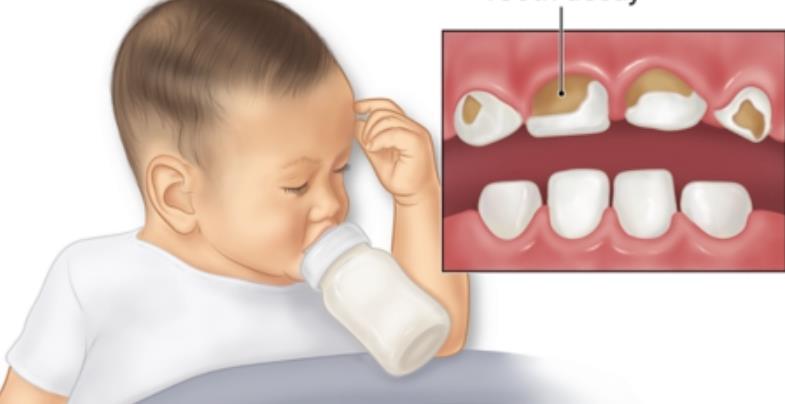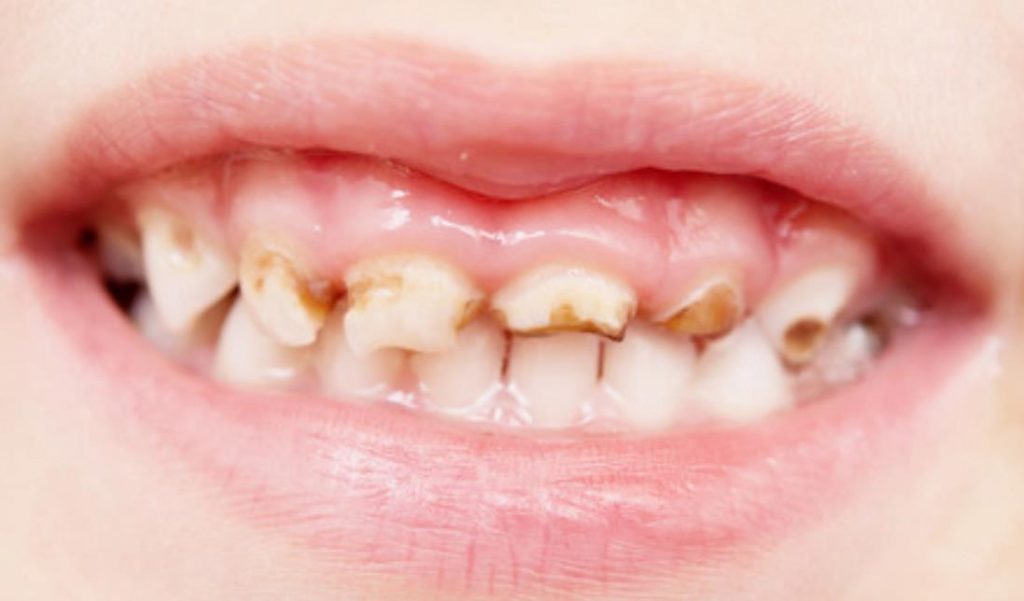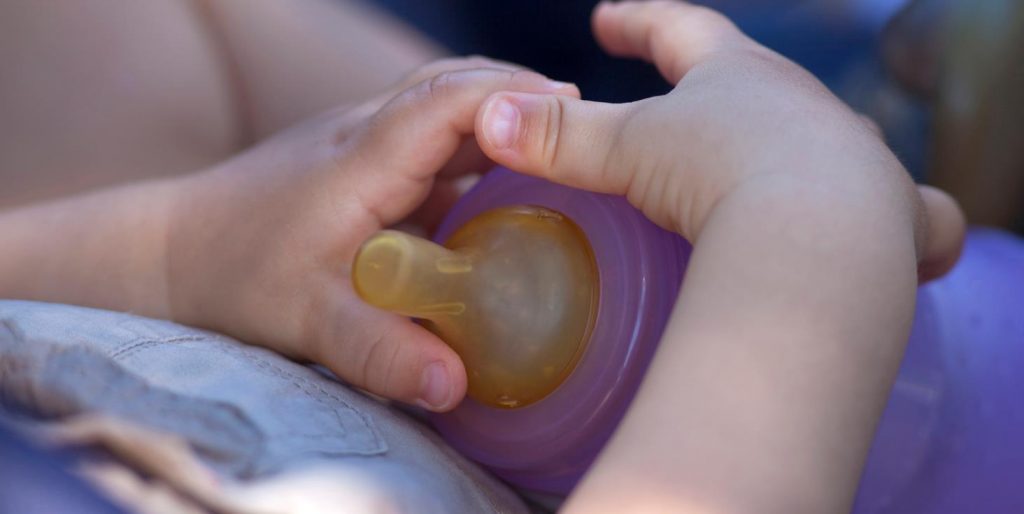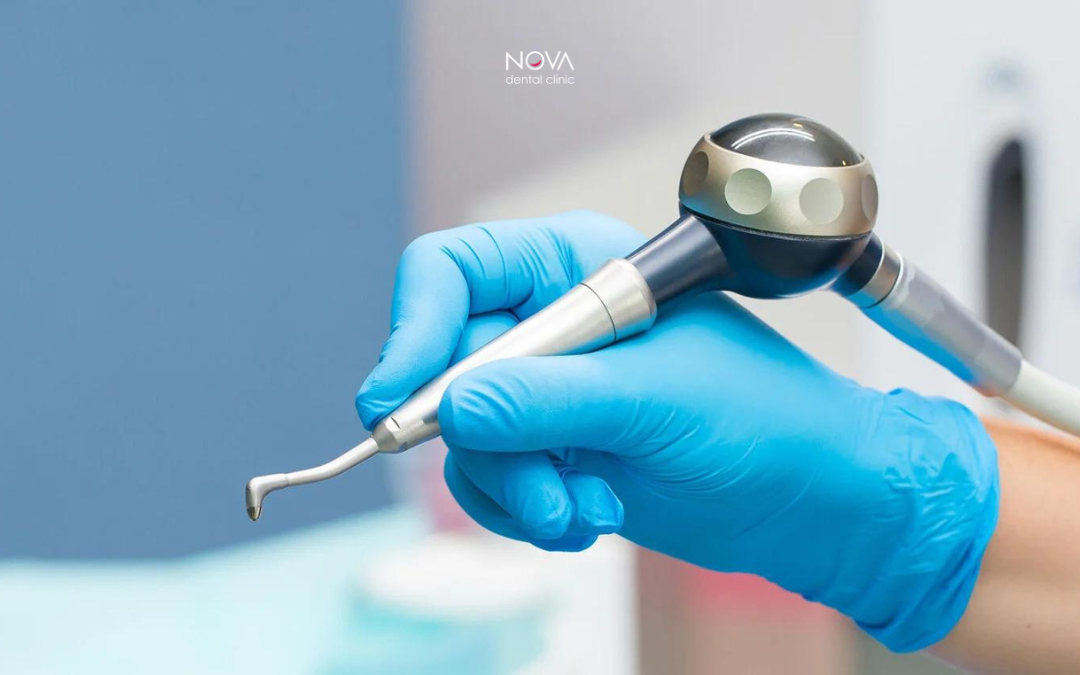
Although they are temporary, baby teeth play a crucial role in helping your child chew properly, speak, and develop a positive self-image early in their childhood.
Cavities in the early childhood are the main cause of baby tooth destruction. In addition to poor diet and inadequate hygiene, one more factor contributes to their development – the baby bottle! In fact, the consumption of beverages via bottles is so significant in causing early childhood cavities that dentists also refer to it as “bottle cavities.” In today’s blog, learn about all the reasons why your child’s bottle should find its way to the trash as soon as possible!
What are early childhood cavities, and how do they develop?
Early childhood cavities, bottle cavities, or circular cavities are all terms you may hear when you take your child for a dental check-up. It is most commonly caused by a poor diet rich in sugars, neglected oral hygiene, and reduced fluoride levels in the oral cavity due to not using a toothpaste. Parents often take the wrong approach when it comes to taking their child to the dentist, assuming that since baby teeth will fall out anyway, they don’t need to be monitored. A characteristic feature of early childhood cavities is their location. Permanent front teeth are more resistant to cavities than side teeth because their smooth and flat surface allows for self-cleaning with saliva. Conversely, cavities develop rapidly on the front baby teeth, circling close to the gums. This is where the term circular cavities comes from.

And the baby bottle syndrome…
This is where the baby bottle comes into play. Baby bottle syndrome occurs when children’s teeth frequently come into contact with sugars present in juices, formula, and even milk. It typically develops when children fall asleep with a bottle or use it frequently throughout the day. Simple sugars from these liquids interact with bacteria in the mouth, causing cavities. Due to the constant contact with liquids during bottle use, cavities forms on the upper front teeth, while the lower front teeth are better protected by the position of the tongue.

Bottle or breastfeeding?
Breastfeeding not only creates a special bond between mother and child but also offers numerous health benefits. It reduces the risk of infections, obesity, asthma, and many other conditions while also lowering the high risk of cavities caused by the use of baby bottle. However, a common question arises: can breast milk cause cavities?
Yes, breast milk also contains a certain level of sugar, which means that oral hygiene must be maintained from birth by cleaning the gums with moistened gauze and brushing with a toothbrush once the first teeth erupt. Studies have shown that breastfeeding after the second year increases the risk of cavities, but it’s generally believed that cavities form due to combining with other factors which usually contribute to their formation. Thus, current recommendations from pediatric and dental associations suggest breastfeeding up to the age of two due to its benefits, while maintaining good oral-hygiene habits and reducing sugar intake in other meals that child consumes besides breastfeeding.

What can I do to help my child?
To prevent early childhood cavities, the child should be weaned off the baby bottle as early as possible or restricted to using the bottle only for water. If the child does use a bottle, it should ideally be used at least 30 minutes before bedtime, followed by tooth brushing to remove sugar residues. Never dip the bottle’s nipple or a pacifier in sugar or honey to calm or soothe the child to sleep!
Additional tips for preventing early childhood cavities:
- Avoid feeding the child with the same spoon used by the parent or guardian to prevent saliva transfer and bacterial contamination of the child’s oral cavity.
- Clean the gums of infants without teeth using moistened gauze.
- After teeth erupt, brush them with an appropriately sized toothbrush and fluoride toothpaste. Use an amount of toothpaste equivalent to a grain of rice until the age of three.
- After the age of three, the amount of toothpaste should be pea-sized.
- Supervise tooth brushing until fine motor skills develop, typically between ages 8 and 10.
- Encourage healthy eating habits in the child and set clear boundaries for consuming sweets, snacks, and sugary drinks.
- From the age of one, encourage the child to drink from a cup instead of a bottle.

Why is early detection of childhood cavities important?
With regular dental check-ups, early childhood cavities can be prevented or “caught” in its initial stages. This means further progression of cavities can be stopped, and the pain and lengthy dental treatments can be avoided. Teeth severely affected by cavities may need to be extracted, which is always the least desirable outcome in modern dentistry. Premature loss of baby teeth can lead to orthodontic issues and reduced space for permanent teeth.
Prevention is the key to health, and this is also true in this case. Regular check-ups combined with adherence to dental advice on healthy habits can prevent cavities development in childhood.
At Nova Dental Clinic, we warmly welcome our youngest patients, known as Nova Dental Kids, and are always ready to assist parents in ensuring their children’s oral health is well taken care of. Good advice is priceless! Don’t hesitate to bring your little one in for a check-up so we can show them from an early age that the dentist is anything but scary!











